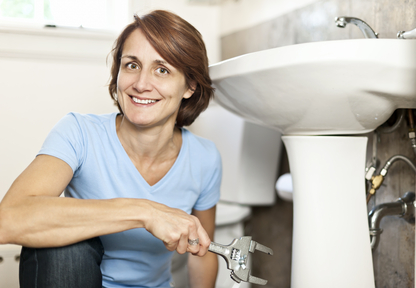Right here in the next paragraph you can find additional superb insight pertaining to How to Prevent Bathroom Water Damage.

The bathroom is very vulnerable for damp accumulation and also prospective water damage as a result of the regular use water in it. This post offers straightforward assessment techniques to assist spotting water damages hazards.
The constant use of water in the washroom makes it very vulnerable for damp accumulation and also potential water damages. By examining it on a regular basis, you can decrease water relevant damages.
The adhering to set of assessments is easy to do and also ought to be done as soon as in every three months in order to maintain your bathroom in good shape and also to prevent possible water damages triggered by the bath tub, the shower, pipe joints and also plumbing, sinks, cabinets, as well as the commode
Do not overlook executing these inspections and also be complete while executing them. Bear in mind that these straightforward evaluations can conserve you a lot of cash by providing early signs for water damage
Tub and also Shower
The shower as well as bath tub require unique attention as well as upkeep. Check the ceramic tiles and replace if fractured. See to it that there is no missing grout in between the tiles. Check and also replace split caulking at joints where the wall surfaces meet the flooring or the bath tub. Clogged drains pipes and also pipes issues will certainly avoid the tub from drying out and also may suggest significant problems below the bath tub. Consult with a professional right away to avoid architectural damages. Take note of stainings or soft locations around the bath tub walls as they may suggest an inner leakage.
Plumbing
Signs for water damage are difficult to find given that most pipes are set up inside the wall surfaces.
Pay unique focus to flooring and walls wetness as well as discolorations as they might indicate an unnoticeable plumbing problem. Check moisture levels in adjoining spaces too.
Sinks and Cabinets
Sinks and cupboards are revealed to dampness and humidity everyday and also are usually overlooked. Inspect frequently under the sink as well as on the kitchen counter over it. Repair any drip in the trap as it may recommend drainpipe troubles. Look around the sink, slow-moving draining pipes may indicate a blocked drain. Change sink seals if they are split or loosened.
The Commode
The commode is a vulnerable water joint. Examine the water lines and search for leaks around the toilet seat, in the hose pipe, as well as under the water storage tank. If you find any kind of indicators of dampness on the flooring around the commode, look for leakages in the toilet edge and also container seals.
Know that hanging commode bowl deodorants increases the chances for obstructions.
10 TIPS TO PREVENT WATER DAMAGE IN THE BATHROOM
The average household uses approximately 80-100 gallons of water per person per day. For a family of 4, that's almost 2,500 gallons of water a week! The largest portion of this consumption comes from bathroom use. Flushing the toilet uses the most water, followed by taking a shower or bath. With that much water running through the home, water damage in the bathroom is bound to happen. Knowing how to spot signs of a water leak is essential to preventing long-term damage. This guide provides you with tips to reduce the impact of water damage on your bathroom.
CAUSES OF BATHROOM WATER DAMAGE
Pipe breaks are the most common cause of water damage we see in our daily jobs. The age of a pipe plays a large role in a pipe break as well as corrosion. Over time, the metal begins to break down, allowing water to escape. Frozen pipe breaks are also a concern in the winter months. Toilet overflows caused by paper products or children flushing inappropriate items. Degraded caulking around the toilet or bathtub can allow water seepage, sometimes behind the fixture, into the subfloor or walls. Condensation forms when the water in a pipe is cooler than the air temperature. Beads of water form on the exterior of the pipes, sometimes so much so that the water begins to drip and pool below. Sink or shower backups created by poor drainage. HOW TO PREVENT WATER DAMAGE IN YOUR BATHROOM
Inspect your toilet supply line for worn or frayed hoses and replace them as needed. Winterize your plumbing to prevent a frozen pipe break. Use vent fans to prevent condensation that can lead to mold growth. Routinely check and replace degraded caulking around your toilet or bathtub. Increase the temperature in your toilet tank and insulate your pipes during the warm summer months to keep condensation from forming. Use child safety locks on the toilets. Flush only toilet paper. "Flushable" wet wipes are actually not good for your plumbing system. Additionally, feminine hygiene products should not be flushed. Prevent water from escaping the tub or shower. Make sure shower curtains are in good condition. Inspect shower doors and replace the seal strip if necessary. Wipe up any water that accumulates on the floor and use bath mats. Water left to sit can cause damage to the tiles and flooring. Refrain from using bath products containing heavy oils to avoid a clogged drain.

Hopefully you enjoyed reading our piece about Preventing Water Damage in the Bathroom. Many thanks for spending some time to read our blog post. In case you appreciated our blog posting please do not forget to pass it around. We treasure reading our article about How to Fix a Water Damage Bathroom.
Start Now